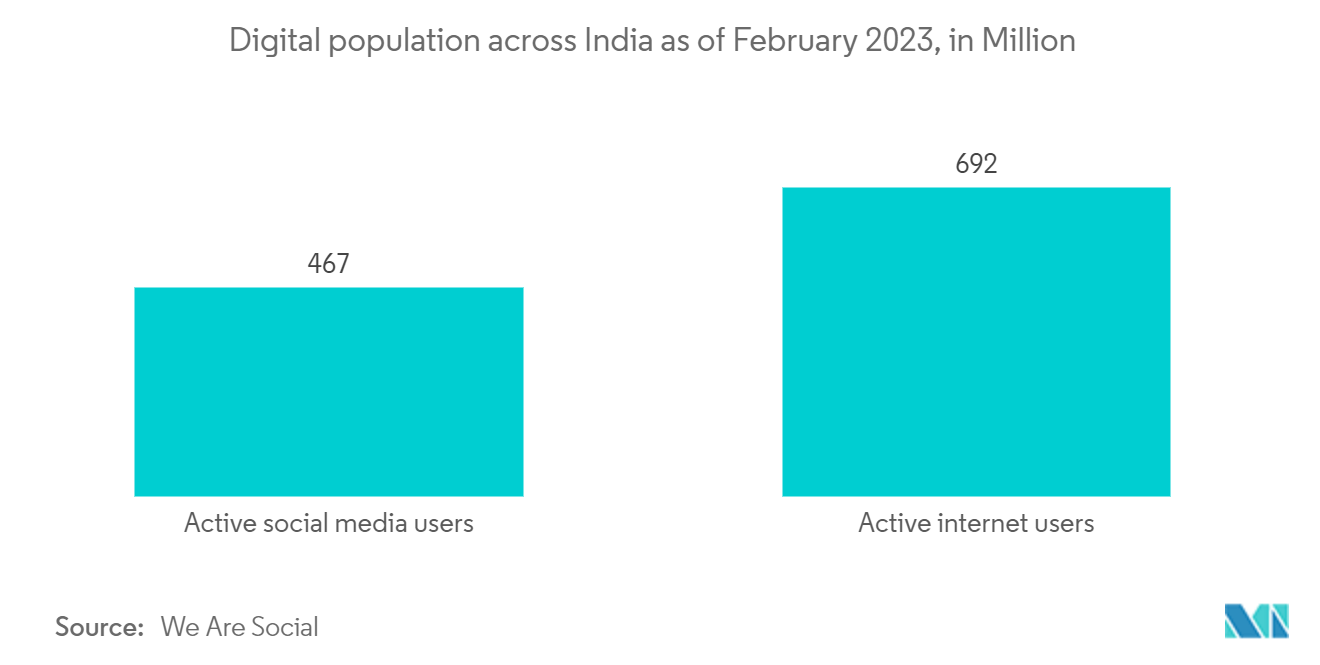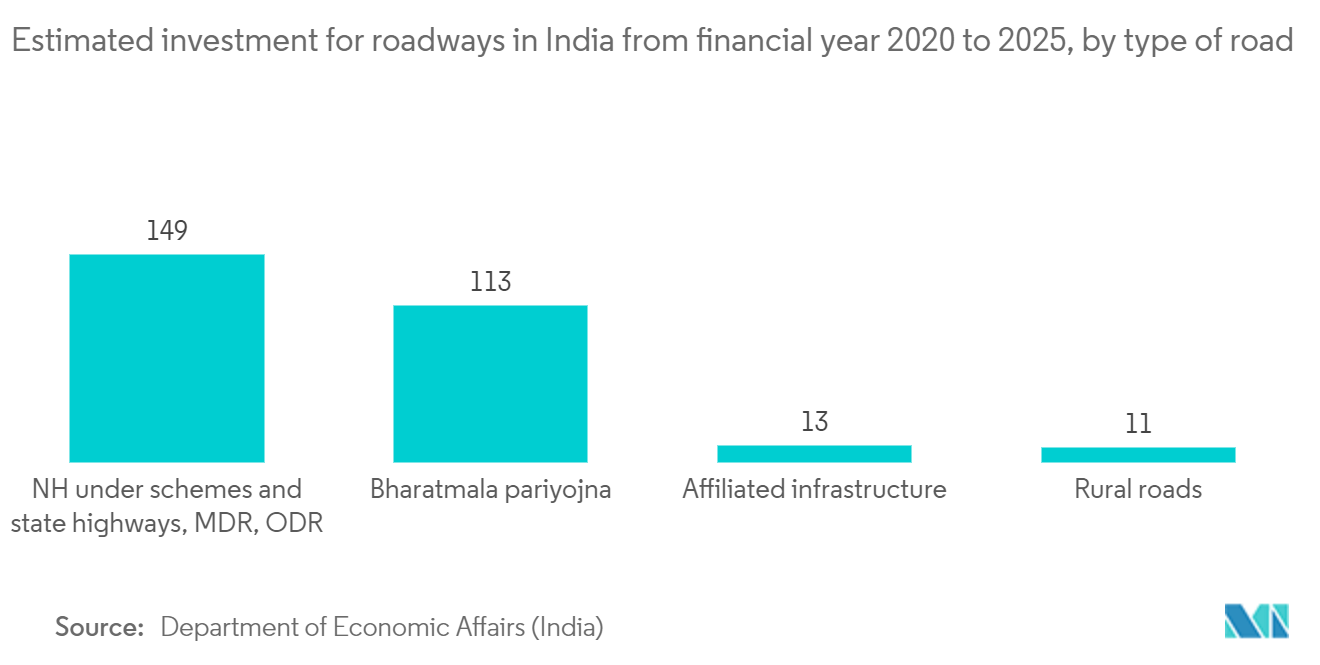Market Trends of India Geospatial Analytics Industry
Increasing Demand of Location Based Service
- India has witnessed a significant increase in the demand for location-based services in recent years, driven by the growing penetration of smartphones, improved internet connectivity, and the increasing adoption of digital services. Geospatial analytics plays a crucial role in meeting this demand and enhancing the effectiveness of location-based services in India.
- Geospatial analytics provides accurate and up-to-date mapping and navigation services. Companies providing map services leverage geospatial data to offer real-time traffic updates, turn-by-turn navigation, and route optimization, helping users navigate through India's often congested roads more efficiently.
- For instance, in 2022, google launched street view services across 10 cities in India with the partnership of two Indian companies. Google Maps has announced that Street View will be available with new imagery licensed from local partners covering more than 1,50,000 km in ten cities in India, which includes Chennai, Bengaluru, Hyderabad, Mumbai, Pune, Delhi, Nashik, Vadodara, Amritsar and Ahmednagar.
- Moreover, with the increasing e-commerce and online food delivery services in India, geospatial analytics aids in optimizing logistics and ensuring timely deliveries. Many companies such as Dominos, Swiggy, Zomato and other food delivery companies are using maps for their last-mile delivery as the map creates polygon representations of the location where the product needs to be delivered. It enables businesses to analyze location data, identify demand patterns, and optimize delivery routes, resulting in improved efficiency and customer satisfaction.
- The increasing demand for location-based services in India is being met with the help of geospatial analytics. It empowers businesses, government agencies, and individuals to make data-driven decisions, optimize operations, and deliver services more effectively, resulting in improved efficiency, better resource allocation, and enhanced user experiences has a context menu.

Increasing Use of Geospatial Analytics by Indian Government
- The Indian government has recognized the importance of geospatial analytics and has shown an increasing demand for its applications across various sectors. For instance, in 2022, The Ministry of Rural Development started using Geographic Information System (GIS) for the betterment of planning and implementation of road construction under urban planning and government projects. It is being used for Mahatma Gandhi National Rural Employment Guarantee Scheme (MGNREGS) and Pradhan Mantri Gram Sadak Yojana (PMGSY) in India.
- Also, Geospatial analytics assists in India's urban planning and infrastructure development initiatives. By analyzing geospatial data, urban planners can identify areas that require infrastructure development, plan transportation networks, and optimize resource allocation for utilities such as water supply and electricity.
- For instance, the Government of India has started using geospatial analytics, which is implemented in its flagship development schemes supporting economic growth and sustainable development. One of the flagship schemes is The SVAMITVA (Survey of Village Abadi and Mapping with Improvised Technology in Village Areas). This scheme uses geospatial data for establishing clear ownership of property in rural areas by mapping land parcels.
- Moreover, It provides valuable insights for evidence-based governance and policy-making. It enables the government to analyze data on demographics, healthcare facilities, education, and other socio-economic factors to identify areas that require targeted interventions. Geospatial analytics helps in formulating policies, monitoring their impact, and ensuring effective implementation.


